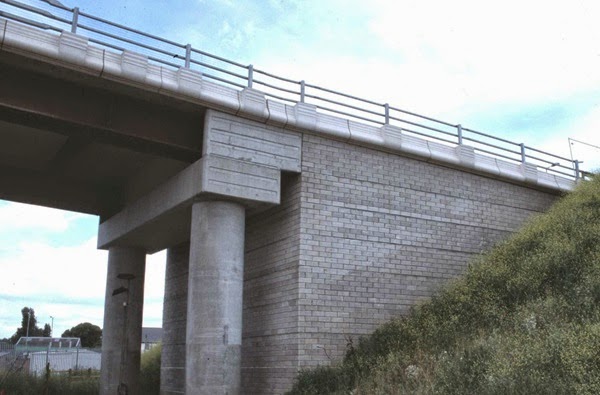Definition of Highway Engineering:
a branch of civil engineering dealing with the planning, location, design, construction, and maintenance of highways and with the regulations and control devices employed in highway traffic operations.
Basic Terms of Highway Engineering:
1. Abutments:

An abutment is an end support of a bridge superstructure.
Abutments are used for the following purposes:
- to transmit the loads of from the superstructure to the foundations.
- support the bearing devices.
- support the backwalls
2. Aggregate/Macadam:
Construction aggregate, or simply “aggregate“, is a broad category of coarse particulate material used in construction, including sand, gravel, crushed stone, slag, recycled concrete and geosynthetic aggregates. Aggregates are a component of composite materials such as concrete and asphalt concrete; the aggregate serves as reinforcement to add strength to the overall composite material.
normally, known simply as asphalt or AC (in North America), is a composite material commonly used for construction of pavement, highways and parking lots. It consists of asphalt binder and mineral aggregate mixed together then laid down in layers and compacted.
Road-making material utilizing uniformly sized stones rollered into layers and finished with asphalt. (Developed by the Scottish engineer John McAdam, 1756-1836.) (Prodic Dict.)
3. Asphalt Concrete:
normally, known simply as asphalt or AC (in North America), is a composite material commonly used for construction of pavement, highways and parking lots. It consists of asphalt binder and mineral aggregate mixed together then laid down in layers and compacted.
4. Back slope:
Where the roadway is in cut, the slope between the ditch and the natural ground away from the road is referred to as a back slope.
5. Breaking Distance:
The distance traveled from the instant that braking begins to the instant the vehicle comes to a stop.
6. Bypass:
A bypass is a road or highway that avoids or “bypasses” a built-up area, town, or village, to let through traffic flow without interference from local traffic, to reduce congestion in the built-up area, and to improve road safety.
7. Camber/Cross Slope:
The cant of a road (sometimes referred to as camber or or railway (also referred to as super elevation) is the difference in elevation between the two edges. A non-zero cant gives a banked turn, allowing vehicles to traverse the turn at higher speeds than would otherwise be possible.
8. Expressway/ Freeway:
An expressway is a divided highway for high-speed traffic with at least partial control of access. The degree of access allowed varies between countries and even between regions within the same country. In some jurisdictions, expressways are divided arterial roads with limits on the frequency of driveways and intersecting cross-streets. In other jurisdictions, access to expressways is limited only to grade-separated interchanges, making them the full equivalent of freeways.











Sir numerical's bhi upload kariye.
ReplyDelete